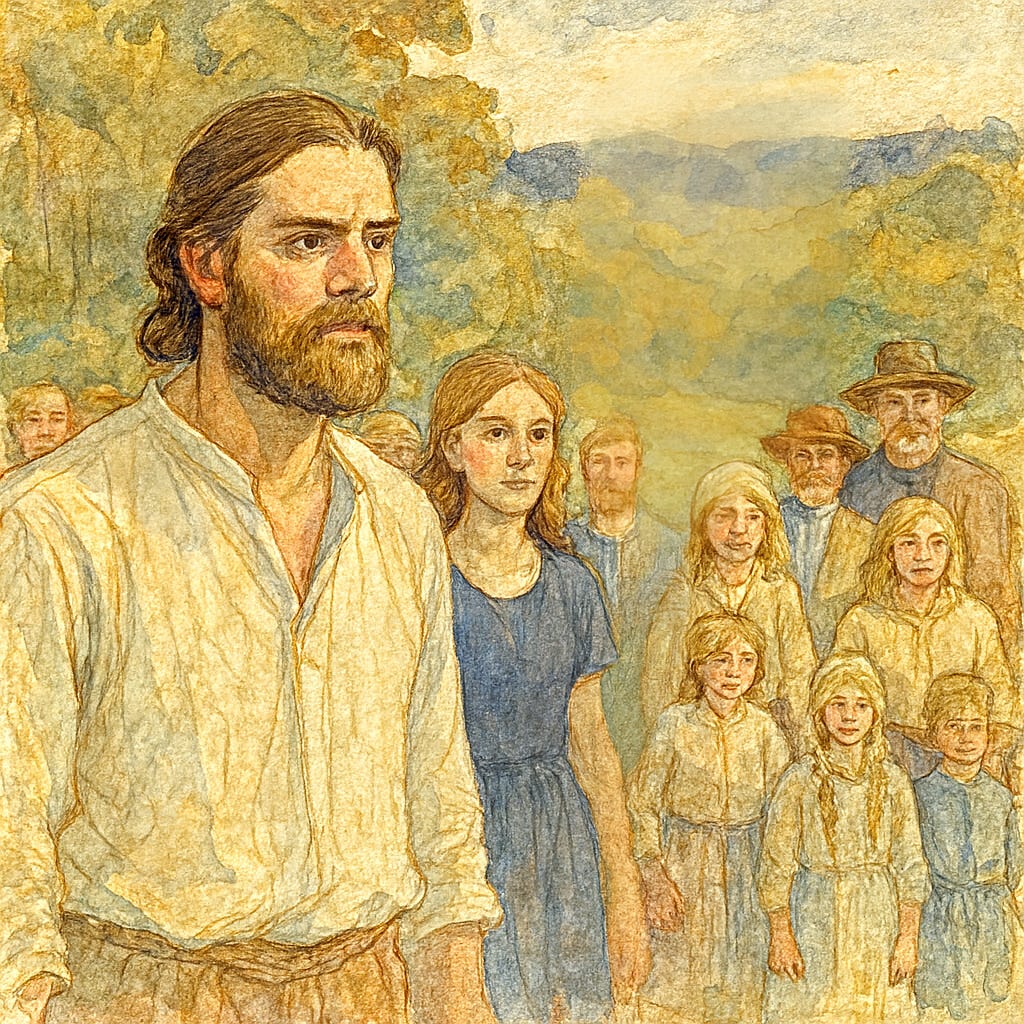Retvrn to the Land: From White Flight to White Roots
By Joakim Andersen
Joakim Andersen examines Return to the Land as a modern effort in ethnic community-building, drawing parallels to historical models of voluntary separation and localized autonomy.
Lately in Sweden, through the Social Democrats’ plans for residential integration or forced mixing, we have been reminded of the central importance of housing and geography. The French geographer Christophe Guilluy, in books such as Le crépuscule de la France d’en haut, has described a constant competition over residential areas. In both Sweden and France, native populations are being pushed out of centrally located suburban areas or banlieues through more or less veiled threats. The central role of geography is confirmed by debates on gentrification, and we are also reminded of it through historical accounts of how busing and desegregation in the United States led to white flight, contributing to the destruction of historically Catholic and Jewish local communities. At the same time, scholars like Putnam have shown strong indications that increased diversity leads to decreased social trust. A particularly interesting study titled E Pluribus, Pauciores ("Out of Many, Fewer") even suggests that increased diversity correlates with declining birth rates. The consequences of lost homogeneity for the British working class can also be illustrated by the predominantly Pakistani grooming gangs that have exploited vulnerable Britons for decades.
In short, there are several reasons to attempt to counter the Minotaur’s, or the bureaucratic state’s, selective efforts to erase local homogeneity. Some of the possible methods are often met with heavy repression, for instance when local men try to use violence to keep foreign groups away. This can be compared with the British experience, and also with the Northern Irish example. However, there are several possible strategies. It can be handled discreetly through efforts to take control of a municipality. It can also be done through efforts to form local communities, more or less strictly formalized. Examples range from South Africa’s Orania to Swedish initiatives such as Det Fria Sverige (The Free Sweden).
Recently, the American group Return to the Land has attracted media attention. The project evokes the classic Motpol concept of communities. The goal is to build parallel societies for Americans of European descent, expressed in the phrase “we must create communities for our own people.” RTTL describes itself as follows: “Return to the Land is a private membership association (PMA) for individuals and families with traditional views and common continental ancestry. We hold events and conferences, and we help groups of our members form European heritage communities.” This should be compatible with American law and liberal principles. A strong rural aesthetic and vision is also evident, with many images of animals and the countryside, a theme of "return to the land," and an interest in European culture and heritage. The organization is open to Euro-Americans regardless of religious affiliation, as long as they do not attack the beliefs of other members.
RTTL reminds us that ethnogenesis is a continuous process. Ethnic groups that are not reborn in each generation will cease to exist. The ability to draw boundaries, in this case between white and non-white, is an aspect of ethnogenesis. The fate of the group also indicates something about the political value placed on the American freedom of association, a highly relevant issue. It is worth noting in passing that this freedom is valued much less in Sweden, and by the Social Democrats almost not at all, when it comes to the native population.
It is notable that RTTL has received relatively neutral media coverage, something that likely would not have happened just a few years ago. The organization’s project fits within a strategy that is deeply American but historically challenging. The creation of voluntary communities, such as phalansteries or hippie communes, has been a recurring phenomenon in American history, but such projects have rarely endured. Common problems included lack of funding, internal conflict, and the wrong people being attracted to them. RTTL seems to be managing these issues well.
The community is also not as totalitarian as several historical American projects, but instead resembles Modern Times, the 19th-century libertarian experiment by individualist anarchist Josiah Warren. On a spectrum where total communal property and shared religion represent one end, both Warren’s voluntary society and RTTL lie closer to the libertarian end. This likely reduces the risk of the aforementioned problems. It can also be assumed that with the ongoing societal decay in many Western countries, the number of families who do not fall into the “wrong people” category but seek the security and sense of belonging that a project like RTTL offers is increasing. Like Orania, it is entirely possible that some of RTTL’s communities, such as the one in the Ozarks, will gradually grow stronger.
RTTL has been criticized by parts of the American dissident right. The main criticism is that instead of distancing themselves from cities and centers of power, they should do the opposite and seize power. This somewhat neoreactionary critique is partially valid, but it overlooks the fact that there is never a single optimal strategy. Different people have different circumstances and different strategies that suit them best. Ideally, these efforts should achieve synergy and support each other. Projects like RTTL can serve as base areas. Their very existence, much like Orania’s, serves as an example to others that "we do not have to live like this." Historically, American utopian communities did not exist in isolation from the rest of society. For example, newspapers read around the world were printed in American communitarian or phalansterian settlements.
The debates surrounding RTTL also have clear metapolitical significance. They remind us that Americans of European descent are a group, that they have a right to secure the conditions for continued existence, and that freedom of association can include the right to draw boundaries and exclude others. Whether this is a suitable approach for the discerning reader is another matter, but overall, it is at the very least a commendable initiative.
Relevant links:
Return to the Land
The Woodlander Initiative
(Translated from the original Swedish article)





Thanks for the opportunity to comment.
BRIEFLY, while self-identifying European-race Communities in European-race Original Homelands is per se a valid enterprise, the same CANNOT be said of such communities in the Homelands of Others, of which the American Continents, occupied for some 17 Millennia by the racial Siberian diaspora and half a Millennium by the European Intrusion, evince a starkly different backdrop.
As a prognosis, the only sensitive and legitimate way forward for Whites in the Americas is, to me, to engage with the proprietorial descendents of the Siberian diaspora to foster THEIR community self-identification + self-government and, that achieved, ask for THEIR OWN position.
We all look through the European lens which - look towards Kiev - has never added much to the global community beyond war and extraction.
Our own way forward is to discover the Others' problems before global movements allow us to destroy OURSELVES.
Blessings!